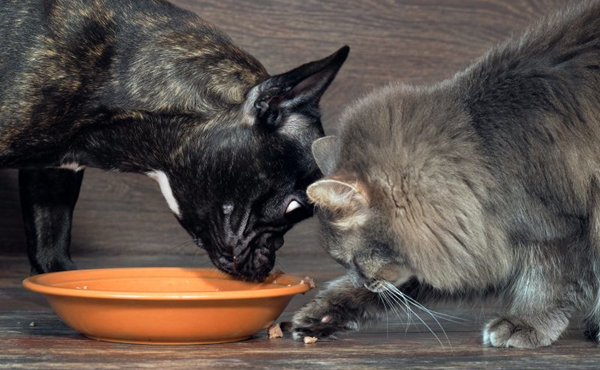
1: Check expiration dates regularly
Most unopened wet or dry pet food will stay fresh for quite some time. By checking the label on your dog or cat food, you should be able to find the best before or best before date printed on the package. While pet food certainly won't spoil the day after this date, you don't want to buy so much food at once that you're still reaching for the same bag months after these dates have passed. The best solution is to purchase a new bag of pet food at least every four to six weeks.
Never feed your dog or cat food that looks spoiled or contaminated. Throw away bulging cans or any food that looks or smells "off". The most common symptoms of foodborne illness are vomiting, diarrhea, loss of appetite and abdominal discomfort.
2: Store pet food in airtight containers
Once pet food is opened, it quickly begins to lose its freshness and the risk of contamination increases. For this, wet pet food is especially noticeable. Once you open a can, pouch, or tray of wet pet food, it can begin to spoil within a few hours at room temperature. After you purchase a pet food container that is large enough to hold a bag of food, but not too much food. The best way to keep it fresh is to minimize the pet food's contact with the air. If you don't want to purchase a pet food container, keep your dog or cat food in a bag. After you scoop out a meal-size portion of pet food, tightly roll up the open top of the bag and secure it with a bag clip. Not only does this minimize the food's contact with the air, but it also helps keep bugs out. You'll want to store the bag in a cool, dry place away from the floor.
3: Don't store food for too long
Once pet food is in the bowl, we start to worry about the safety and freshness of the food. We always assume that dogs and cats will eat all the food offered to them in one sitting and leave a bowl that has been licked clean - HOWEVER, this doesn't always happen.
Wet pet food can quickly begin to spoil at room temperature. Sort out the uneaten portion of your pet's wet meal after four hours. Dry food should not be left in the bowl for more than 24 hours. Exposure to air, humidity, environmental bacteria, and your pet's mouth can significantly reduce the quality of pet food.
4: Wash food containers and bowls regularly
Bowls or dishes used to hold wet food should be washed between each use. Dry food and water bowls need to be emptied and washed in soapy water at least once a week. The scum that accumulates at the bottom of unwashed bowls can contain mould and bacteria, which not only makes food and water smell and taste bad, but can also make your pet sick.
Pet food and snack storage containers should also be cleaned regularly. If the food is in direct contact with the container, empty the crumbs, wash the container with soapy water and make sure it is completely dry before pouring a new bag into it. Wash the container whenever it looks a little "dirty".
5: Keep children away from pet food
Finally, minimize human contact with pet food. Despite manufacturers' best efforts, dog and cat food can sometimes be contaminated with bacteria such as salmonella and listeria, which can make humans sick. The very young and immunocompromised are at the highest risk. Conversely, we may introduce bacteria and other disease-causing microorganisms into pet food when we handle it. People should all wash their hands before and after handling pet food.
Copyright © 2019 Kolysen Packaging Integration Co., Ltd. | All rights reserved
We are here to help you! If you close the chatbox, you will automatically receive a response from us via email. Please be sure to leave your contact details so that we can better assist